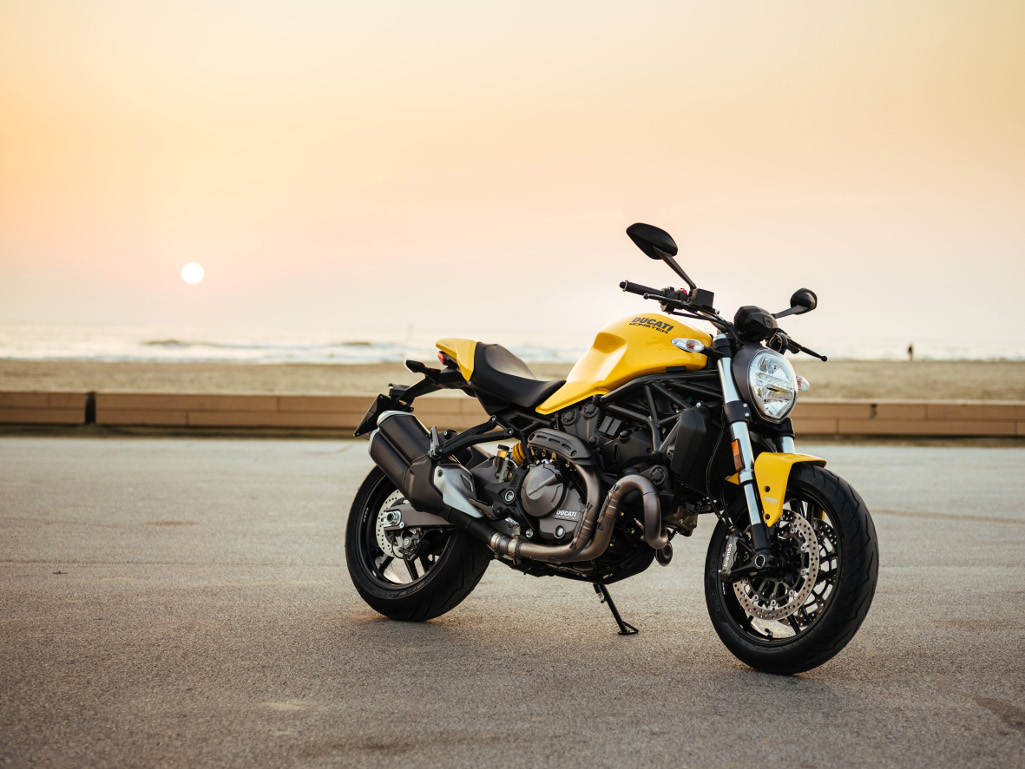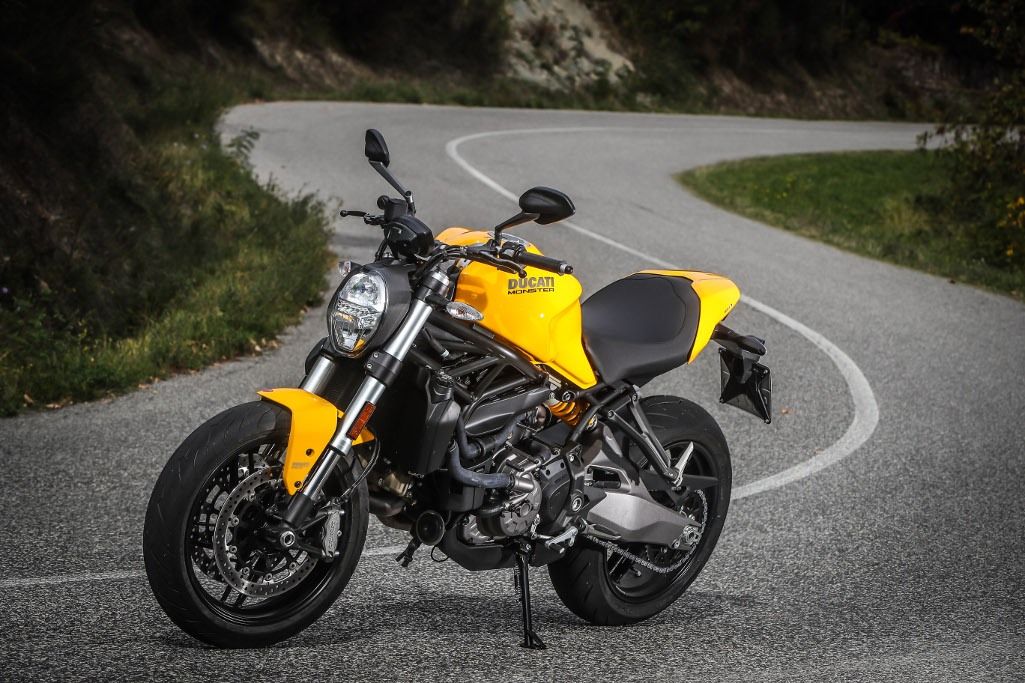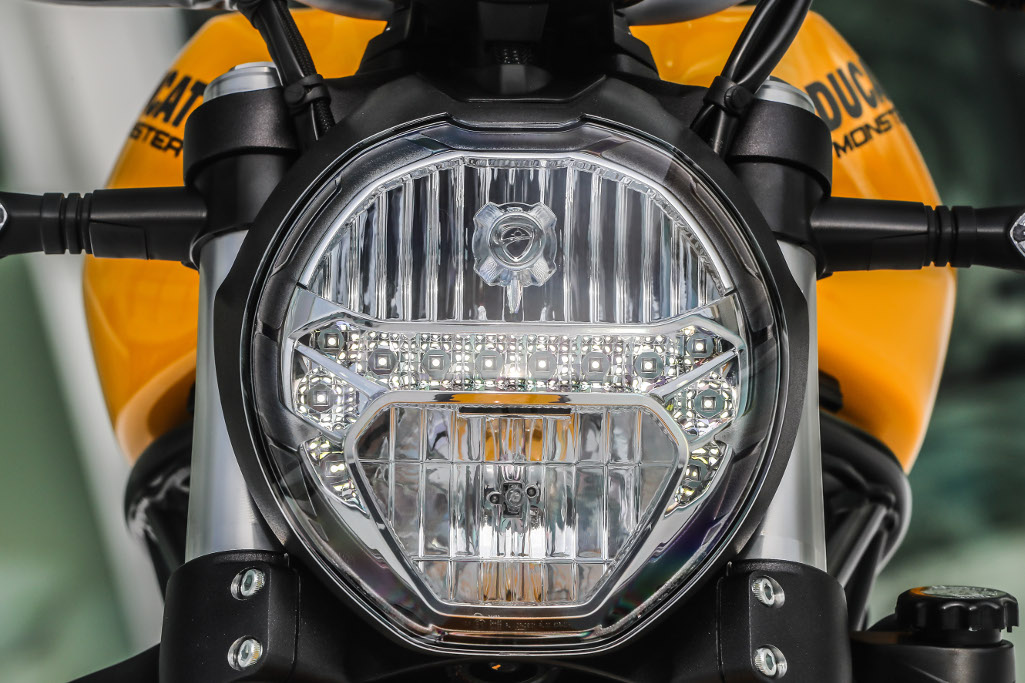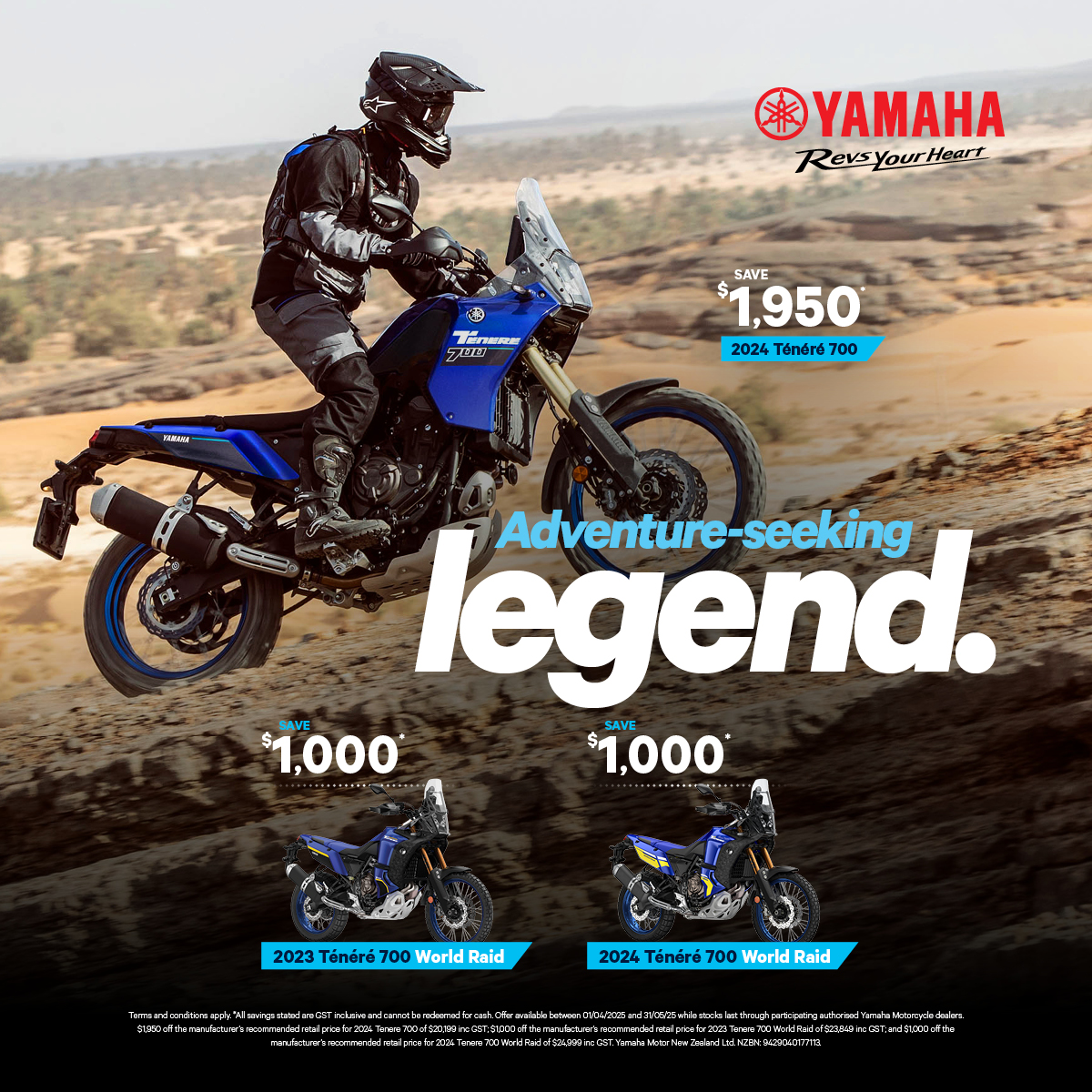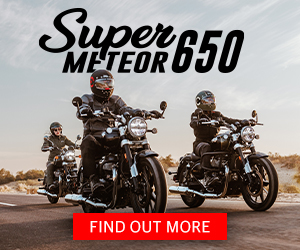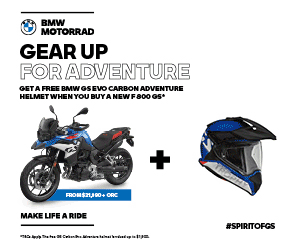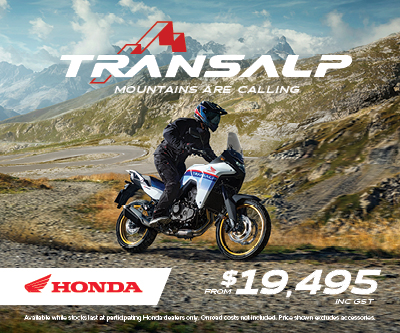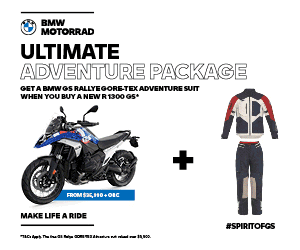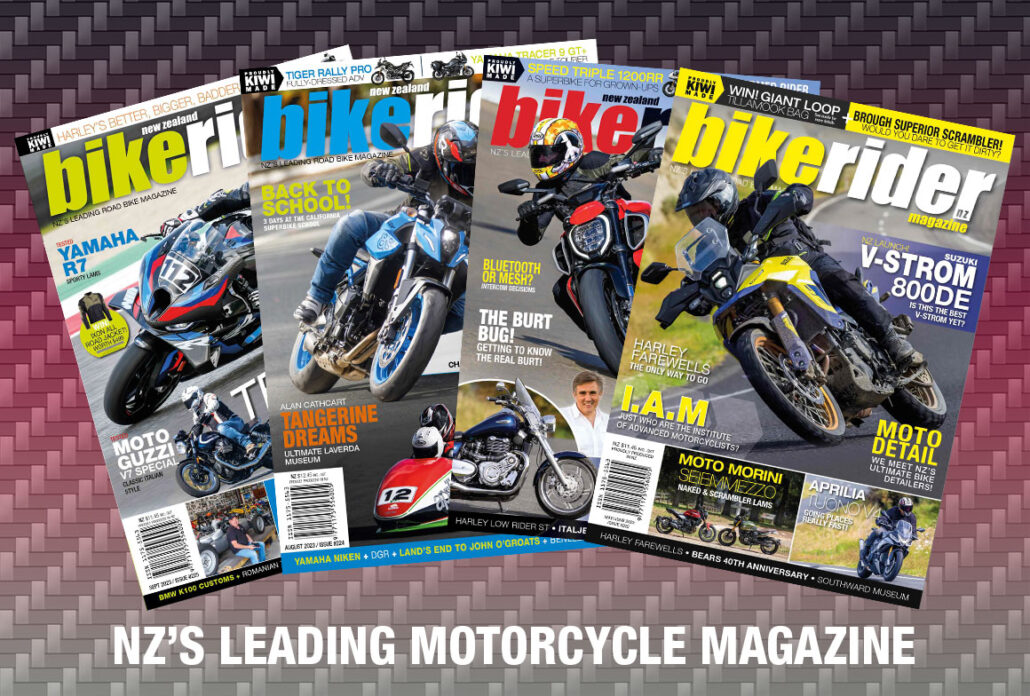Monster Mania
Ducati claims that their new Monster 821 is the most balanced Monster to date. With a claim like that, we just had to know if it was true, so Roland was tasked with heading to Rimini to find out.
Words: Roland Brown Pics: Milagro
There are much worse ways to begin the day than drawing back the curtains of a Rimini hotel to see about 30 identical Ducati Monsters glinting in the sunshine in front of the beach. The lines of yellow bikes bring to mind a similar scene featuring the Monster 620, which was launched in 2001 with a Rimini beach party to celebrate the 100,000 sales that had then just been reached by the growing Monster family.
That total seemed impressive back then but 16 years later, with the Monster now celebrating its 25th anniversary, Ducati’s naked star’s production total has passed 320,000 and continues to rise. And we’re back in the Adriatic coastal town to ride the latest, updated Monster 821 – which is designed to resemble the original M900 Monster that began the line in 1993.
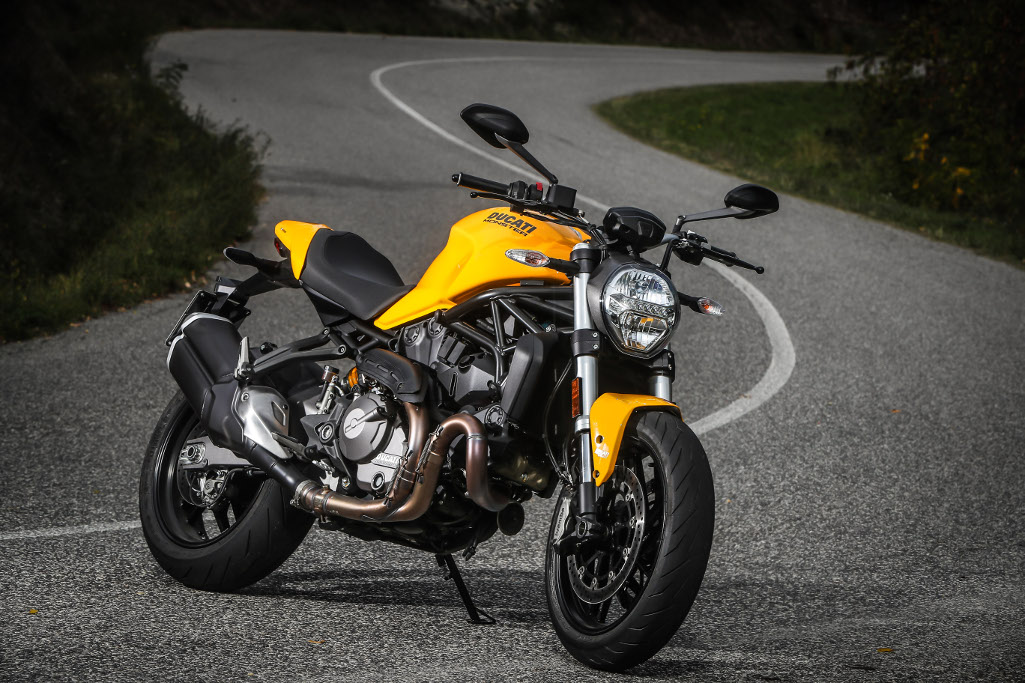 Ducati long ago realised that, when developing the Monster, the important thing is to continue to evolve it while leaving the essential shape pretty much alone. In fact, that seems particularly true for this 821, which gains a slightly more retro look while also moving closer to the Monster 1200 that was updated last year.
Ducati long ago realised that, when developing the Monster, the important thing is to continue to evolve it while leaving the essential shape pretty much alone. In fact, that seems particularly true for this 821, which gains a slightly more retro look while also moving closer to the Monster 1200 that was updated last year.
Ducati’s theme for the launch was that the updated 821 is the best balanced of the Monster family, sitting between the 797 and 1200 models. Apparently, it is also “more beautiful, sporty, sophisticated and yellow” – the latter being undeniable, because the colour is a new option along with the retained red and black.
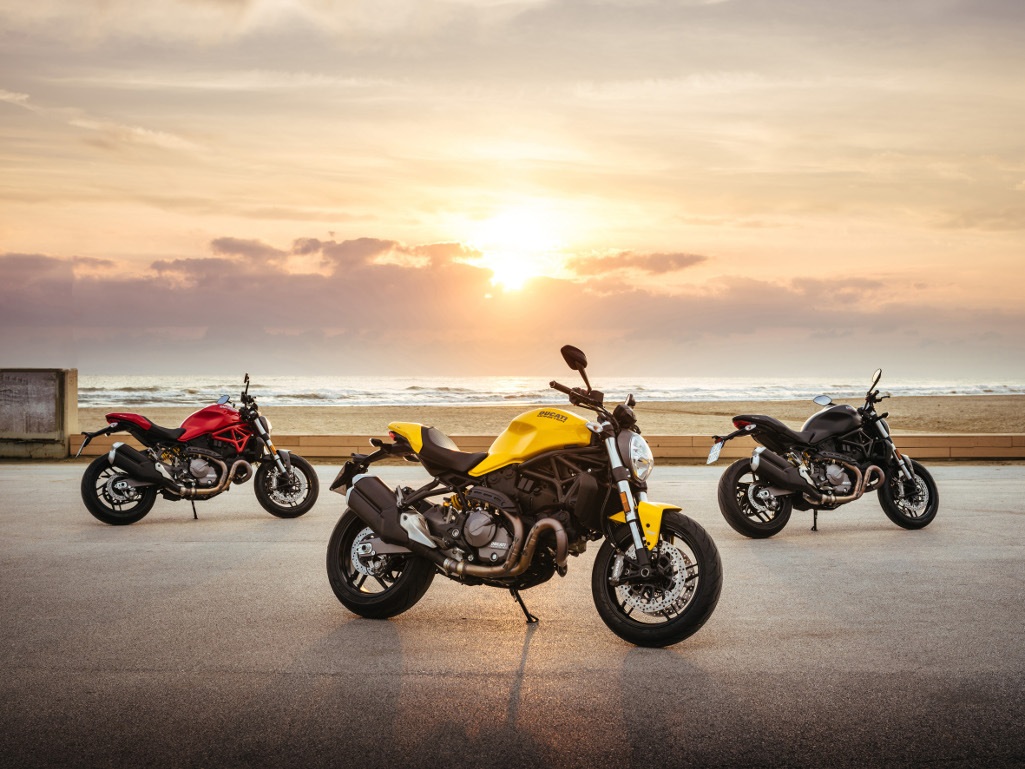 The “more beautiful” claim refers to the subtly revised shape that results from the 821 using the Monster 1200’s headlight, fuel tank and tailpiece, plus a new silencer. Whether this bike looks better than its predecessor is a matter of opinion, but its tank is undeniably shapely, and like the 1200’s incorporates a ski-boot style catch at the front – va nod to the original M900’s similar feature. Less helpfully, the change also means a one-litre reduction in capacity, to 16.5 litres. And there are still some scruffy rubber hoses on the left of the engine.
The “more beautiful” claim refers to the subtly revised shape that results from the 821 using the Monster 1200’s headlight, fuel tank and tailpiece, plus a new silencer. Whether this bike looks better than its predecessor is a matter of opinion, but its tank is undeniably shapely, and like the 1200’s incorporates a ski-boot style catch at the front – va nod to the original M900’s similar feature. Less helpfully, the change also means a one-litre reduction in capacity, to 16.5 litres. And there are still some scruffy rubber hoses on the left of the engine.
It’s difficult to know where Ducati’s “more sporty” claim comes from, because this bike has the same 821cc, liquid-cooled Testastretta 11º V-twin engine and steel-framed chassis as the outgoing model, along with an unchanged riding position. In fact, the DOHC eight-valve Desmo unit’s maximum output of 109bhp at 9250rpm is 3bhp down on the 2015 model’s, presumably due to the new exhaust. The peak torque figure of 86Nm is also slightly lower, and the claimed wet weight of 206kg is half a kilo heavier.
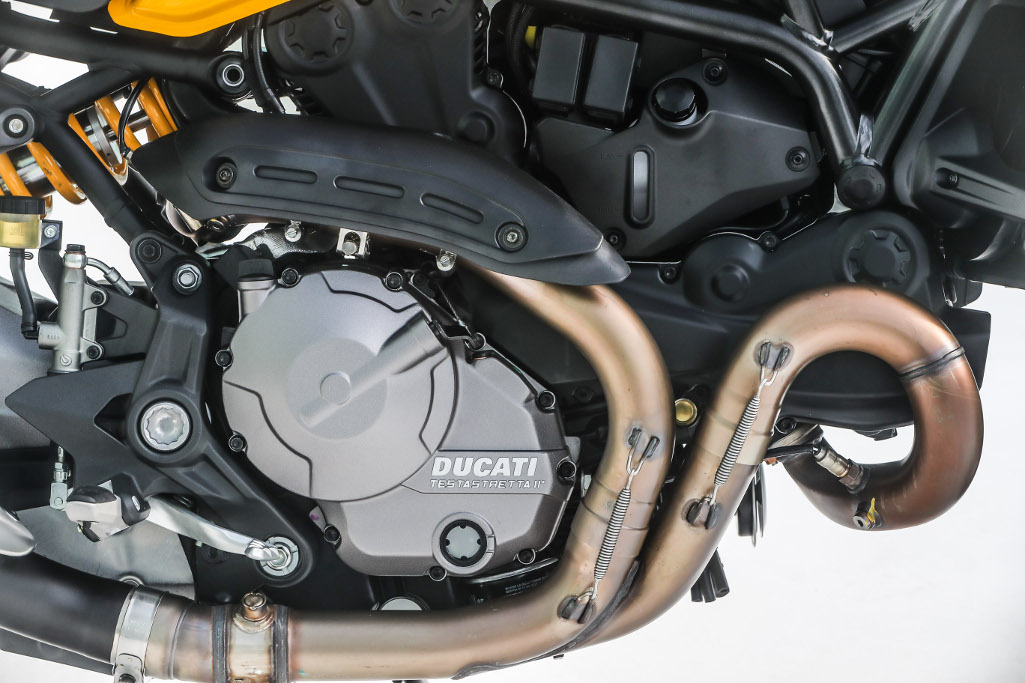 Those differences are not enough to be noticeable but nor are they evidence of the Monster getting remotely sportier. The only change that might arguably support that particular claim is the new option of a two-way quickshifter, which the launch bikes weren’t fitted with.
Those differences are not enough to be noticeable but nor are they evidence of the Monster getting remotely sportier. The only change that might arguably support that particular claim is the new option of a two-way quickshifter, which the launch bikes weren’t fitted with.
Ducati’s “more sophisticated” claim holds up better, due to the bike’s new TFT instrument panel. The smartphone-like display is almost identical to the Monster 1200’s, and is attractive as well as clever. It comes to life with a burst of colour, changes its display according to which of the three rider modes you’re using, and incorporates a fuel gauge and gear indicator.
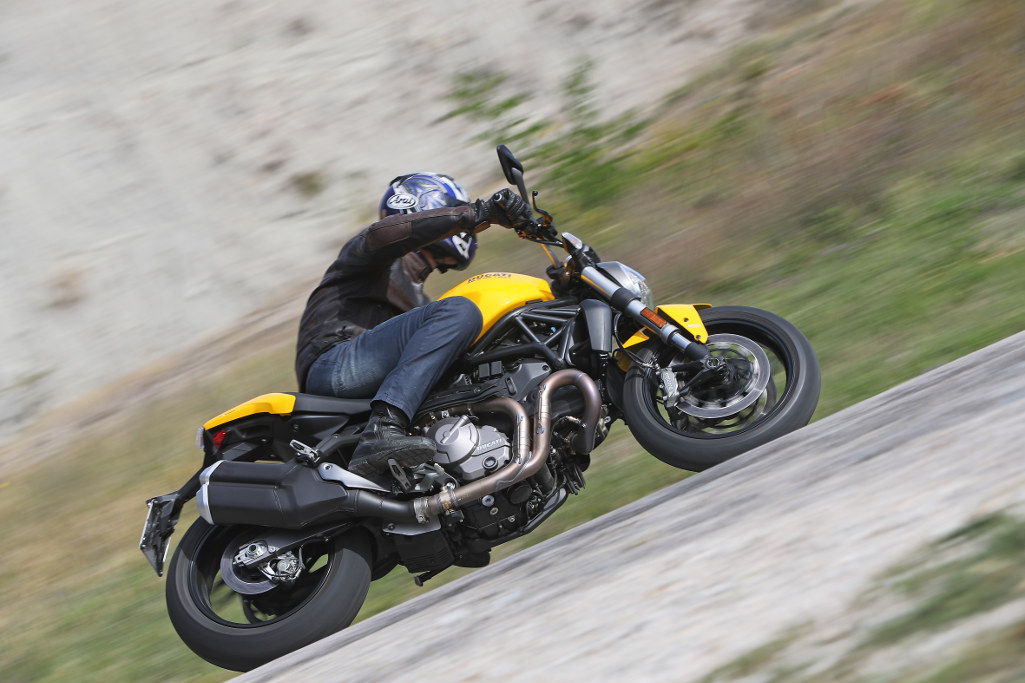 The 821 was already usefully sophisticated. The ride-by-wire engine’s three modes (Sport, softer Touring and reduced-power Urban) each have dedicated eight-way traction control and three ABS settings, which can be adjusted via the TFT display’s comprehensive menu. Unlike the Monster 1200, this bike still doesn’t have an IMU, so can’t offer the bigger model’s anti-wheelie function (except in conjunction with the traction control) or cornering ABS, but it’s smart for a naked middleweight.
The 821 was already usefully sophisticated. The ride-by-wire engine’s three modes (Sport, softer Touring and reduced-power Urban) each have dedicated eight-way traction control and three ABS settings, which can be adjusted via the TFT display’s comprehensive menu. Unlike the Monster 1200, this bike still doesn’t have an IMU, so can’t offer the bigger model’s anti-wheelie function (except in conjunction with the traction control) or cornering ABS, but it’s smart for a naked middleweight.
One other thing this 821 can’t quite match is the magnificence of its predecessor’s improbably loud exhaust note, which I still vividly recall from the launch in Bologna three years ago.
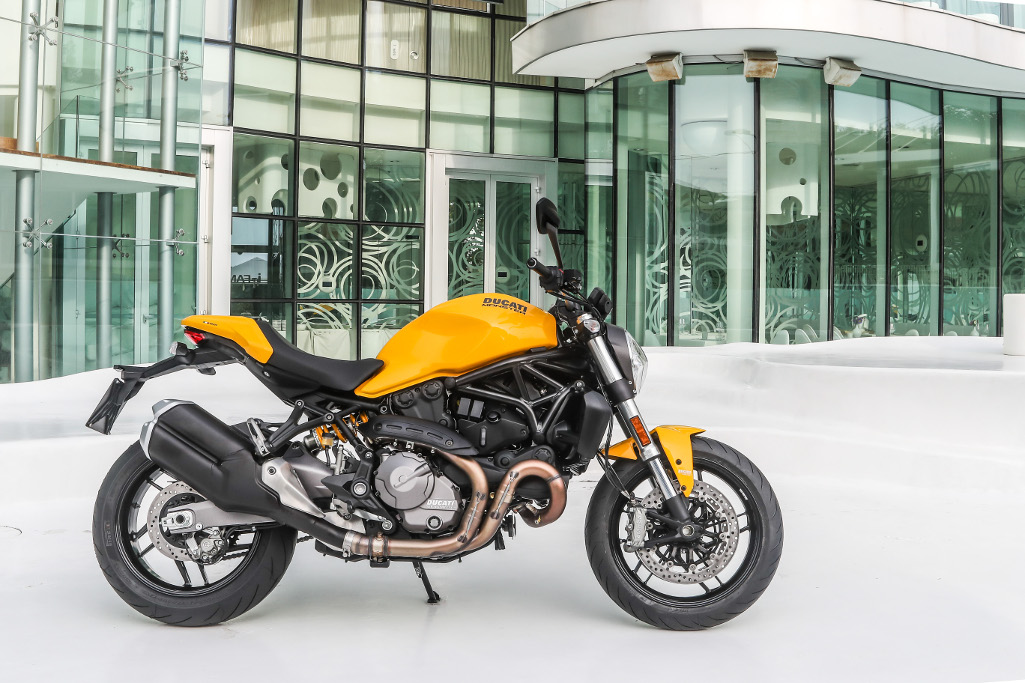 I have to say however, the new, mostly black-finished double silencer looked neat enough as I approached, threw a leg over the adjustable seat, and leant slightly forward to the near-flat one-piece handlebar. Ergonomics are unchanged (apart from the rear footrests now being on a separate bracket) and the seat is sufficiently low to give most riders no problems in town, in conjunction with a reasonably generous amount of steering lock.
I have to say however, the new, mostly black-finished double silencer looked neat enough as I approached, threw a leg over the adjustable seat, and leant slightly forward to the near-flat one-piece handlebar. Ergonomics are unchanged (apart from the rear footrests now being on a separate bracket) and the seat is sufficiently low to give most riders no problems in town, in conjunction with a reasonably generous amount of steering lock.
Despite its softer sound, the Monster had plenty of character as well as performance. As we rode through Rimini, I tried Urban mode – which cuts power to 75bhp and gives a very flat feel – along with conservative default settings for the traction control and ABS. But once out of town on a loop through the hills of Emilia-Romagna, a press of the button to select Touring gave full power and potential for an instant burst of acceleration, making the Monster plenty of fun.
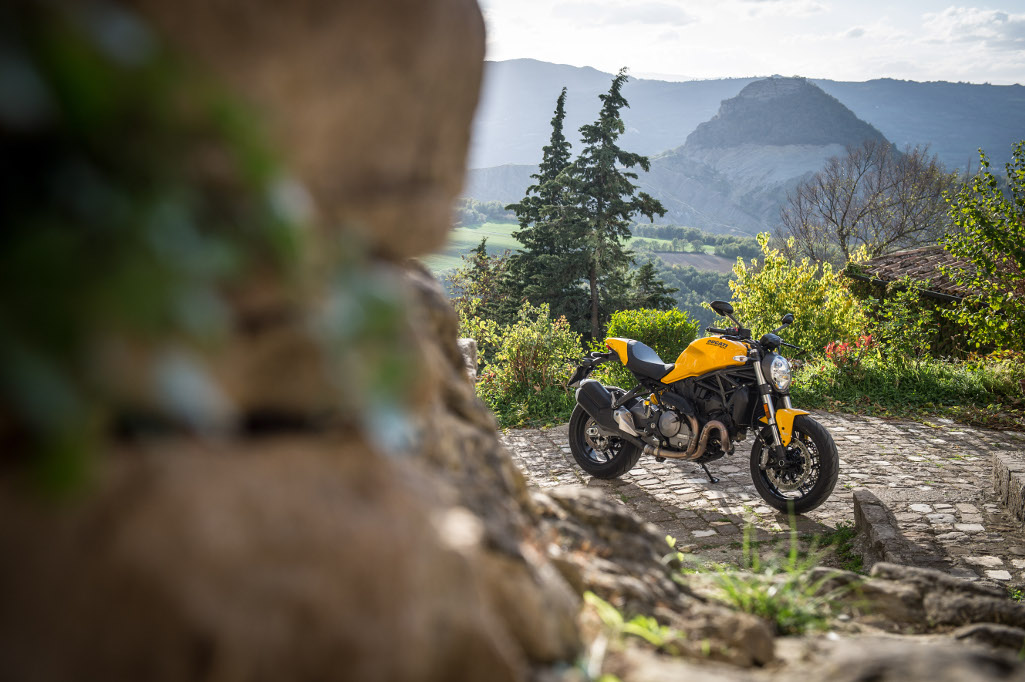 Fuelling was very crisp and accurate, both in Touring and the more aggressive Sport mode, which didn’t actually feel very different, so was the one that I stuck to for most of the day.
Fuelling was very crisp and accurate, both in Touring and the more aggressive Sport mode, which didn’t actually feel very different, so was the one that I stuck to for most of the day.
Inevitably, the 821 can’t match the 1200’s performance, but the smaller engine has long-stroke dimensions and is usefully flexible. The maximum torque figure of 86Nm arrives at 7750rpm but there’s more than 70Nm all the way from 4500rpm to the limit at 10,000rpm, so the Monster always leapt forward in enjoyably lively fashion.
Without doubt, the 821 couldn’t match the arm-yanking violence of a super-naked bike, but in many ways Ducati’s claim that this is the best balanced of the Monster family made sense. Combined with its lively low-speed acceleration and crisp throttle response, the bike’s ability to cruise long-leggedly at 140km/h, or head on towards a top speed of about 225km/h, means it has enough straight-line performance to keep most riders entertained and holding on tight against the wind.
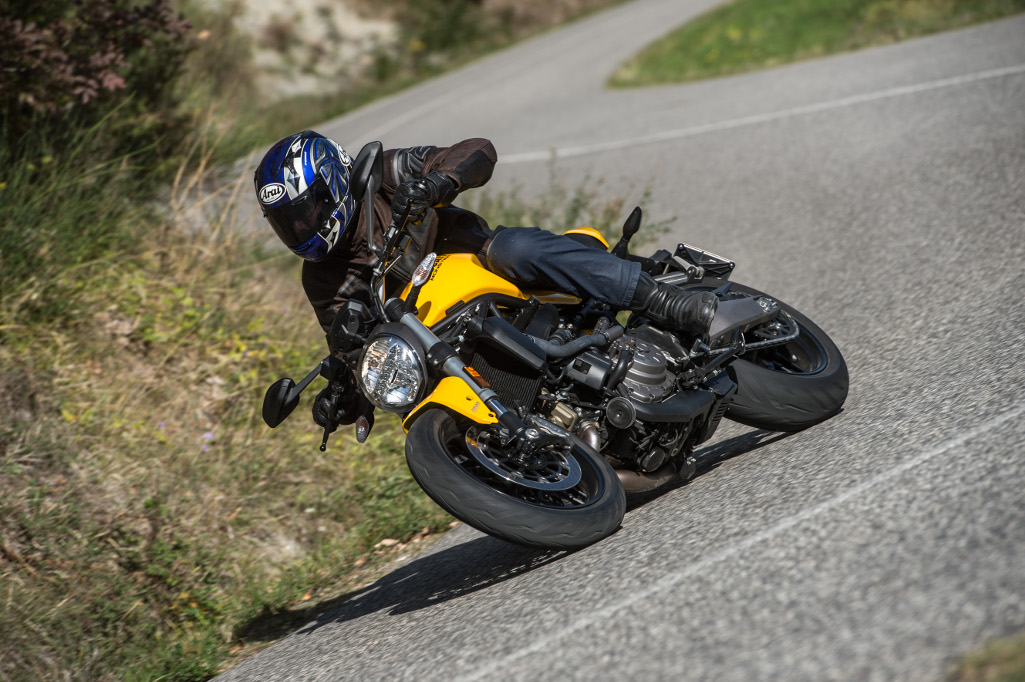 It also has a chassis to match, although this possibly wasn’t displayed to best effect. The launch route through Emilia-Romagna was twisty and steep, which highlighted the Ducati’s lightness and responsive, yet neutral steering. But the road surface was often tricky, with a mixture of bumps, tarmac seams, gravel and even large cracks that would have given an adventure bike a thorough workout.
It also has a chassis to match, although this possibly wasn’t displayed to best effect. The launch route through Emilia-Romagna was twisty and steep, which highlighted the Ducati’s lightness and responsive, yet neutral steering. But the road surface was often tricky, with a mixture of bumps, tarmac seams, gravel and even large cracks that would have given an adventure bike a thorough workout.
Some riders thought the non-adjustable, 43mm Kayaba forks were harsh; others said they were too soft, especially under braking. I’d have been interested to try the Monster 1200’s adjustable units, but was impressed both by the 821’s taut feel and its ride quality in such demanding conditions. Same goes for the Sachs shock, which like the bigger model’s, is adjustable for preload and rebound damping, and worked pretty well for my 85kg weight, the unchanged 140mm of travel feeling about right.
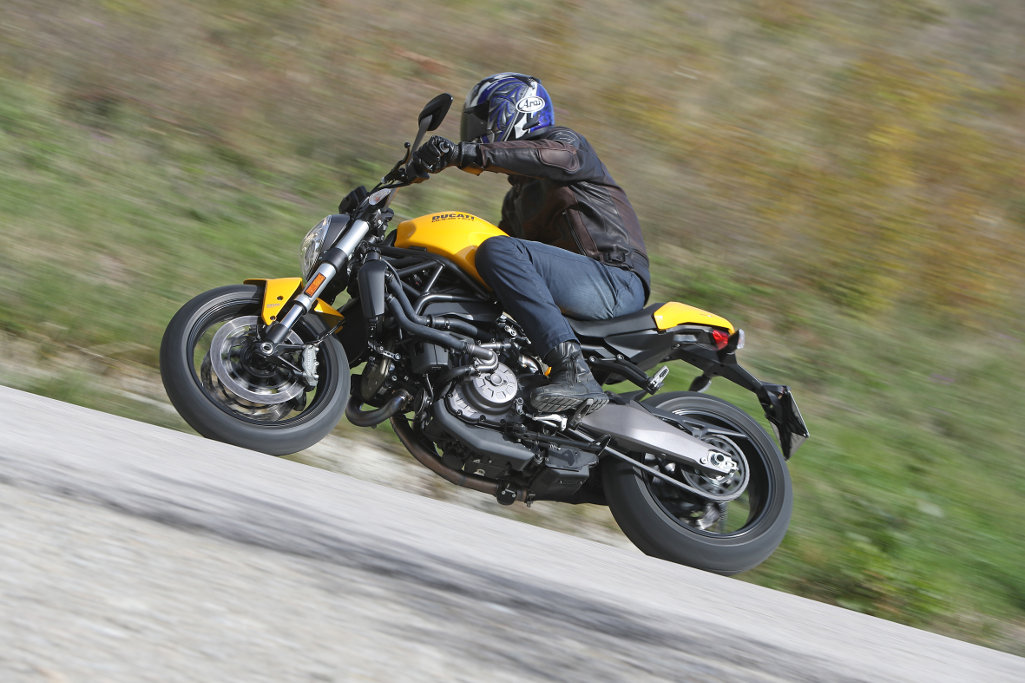 I certainly found the 821 more comfortable than I recall several Monster models of a few years ago, which reflects well on its seat as well as its suspension. And I had no complaints either about the Pirelli Diablo Rosso III tyres, which coped well with the tricky surfaces, or the front brake, which generated plenty of power and control with its Brembo Monobloc M4.32 calipers biting 320mm discs.
I certainly found the 821 more comfortable than I recall several Monster models of a few years ago, which reflects well on its seat as well as its suspension. And I had no complaints either about the Pirelli Diablo Rosso III tyres, which coped well with the tricky surfaces, or the front brake, which generated plenty of power and control with its Brembo Monobloc M4.32 calipers biting 320mm discs.
Sure, the Monster 1200’s fatter rear rubber (190 – rather than 180-section), more sophisticated, IMU-governed traction control and cornering ABS would all have been welcome, but at this level the Ducati is well equipped.
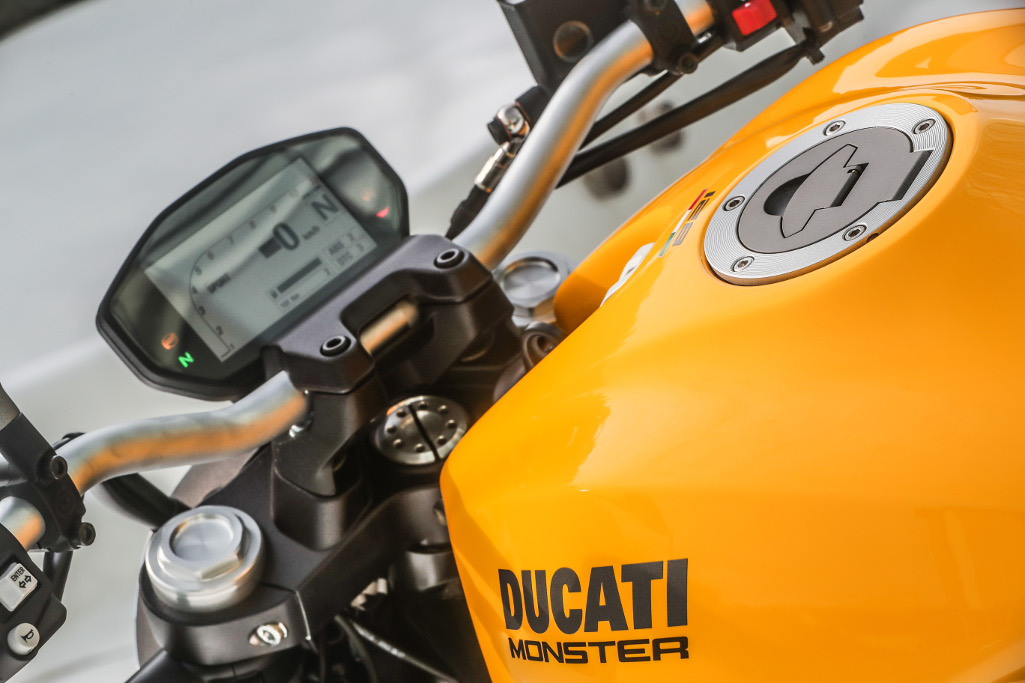 The new TFT display shows fuel consumption and range-to-empty, incorporates a lap timer and shift light, is adjustable for brightness, and can be linked to a smartphone, via Bluetooth and Ducati’s optional Multimedia system. It’s true the smaller fuel tank reduces range, but owners typically average less than 6 l/100km, and even the launch average of 6.5l/100km would allow well over 200km.
The new TFT display shows fuel consumption and range-to-empty, incorporates a lap timer and shift light, is adjustable for brightness, and can be linked to a smartphone, via Bluetooth and Ducati’s optional Multimedia system. It’s true the smaller fuel tank reduces range, but owners typically average less than 6 l/100km, and even the launch average of 6.5l/100km would allow well over 200km.
Practicality in other respects is reasonable. The seat is designed more for one rider than two, but does at least provide pillion hand-holds below it. Grab-handles are available as an accessory, along with a wind-screen and colour-matched flyscreen, higher and lower seats, soft luggage, and numerous carbon-fibre and billet aluminium parts – including some cool-looking, Termignoni carbon cans.
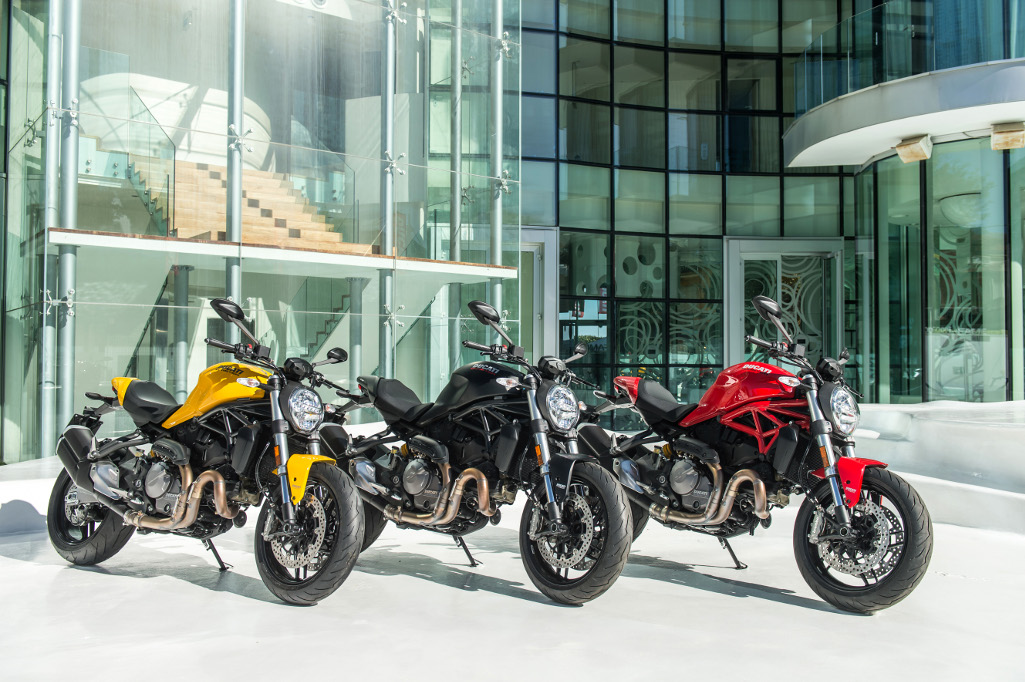 Those would add to a price that is already on the high side by naked middleweight standards: comparable with BMW’s R nineT Pure and Triumph’s Street Triple RS, but up on the other Street models and other rivals including Aprilia’s Shiver 900, Kawasaki’s Z900 and Yamaha’s MT-09. Then again, the Monster never has been cheap, going all the way back to the original M900.
Those would add to a price that is already on the high side by naked middleweight standards: comparable with BMW’s R nineT Pure and Triumph’s Street Triple RS, but up on the other Street models and other rivals including Aprilia’s Shiver 900, Kawasaki’s Z900 and Yamaha’s MT-09. Then again, the Monster never has been cheap, going all the way back to the original M900.
Whether this latest in the line is the best balanced, or the best value, of the current family depends on what you want from a naked V-twin. What’s for sure is that the 821 has plenty of the original Monster’s charm and ridability, as well its trademark style.
Ducati Monster 821
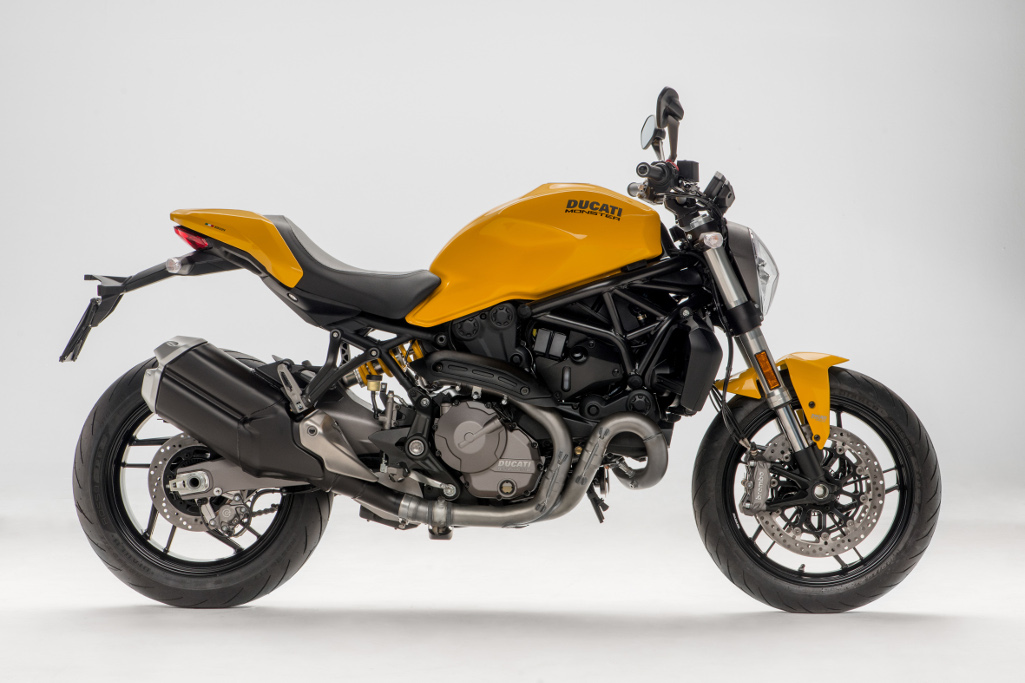
Engine type Liquid-cooled 90-degree V-twin
Valve arrangement DOHC, eight valves
Displacement 821cc
Bore x stroke 88 x 67.5mm
Compression ratio 12.8:1
Carburation Continental injection system, Mikuni throttle bodies
Maximum power 109bhp @ 9250rpm
Maximum torque 86Nm @ 7750rpm
Clutch APTC wet multiplate slipper
Transmission 6-speed
Front suspension 43mm inverted telescopic Kayaba, 130mm travel
Rear suspension One Sachs damper, 140mm wheel travel, adjustments for preload and rebound damping
Front brake 2, four-piston Brembo radial Monobloc calipers, 320mm discs with ABS
Rear brake Twin-piston Brembo caliper, 245mm disc with ABS
Front wheel 3.50 x 17-inch; cast aluminium
Rear wheel 5.50 x 17-inch; cast aluminium
Front tyre 120/70 x 17in Pirelli Diablo Rosso III
Rear tyre 180/60 x 17in Pirelli Diablo Rosso III
Rake/trail 24.3 degrees/93.2mm
Wheelbase 1480mm
Seat height 785-810mm
Fuel capacity 16.5-litres
Weight 206kg wet (kerb, with tank 90 per cent full)

